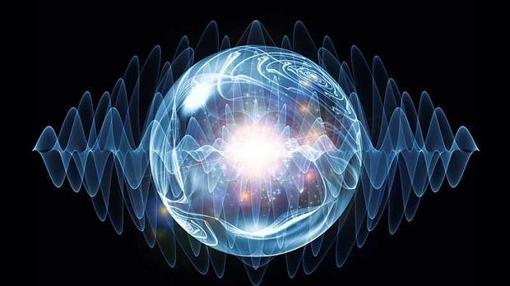At the moment we will have to wait until the teleportation of people, Star Trek style, decongests the highways. Today this option is pure fantasy, but since 1993, the teleportation of information has been a reality in the laboratory and there are companies seeking to use it to create communication networks. Its great advantage is that the messages exchanged are indecipherable , thanks to the use of a resource known as quantum cryptography. A limited form of this quantum cryptography is used today in terrestrial communications, via laser or fiber optics, at a distance of up to 100 kilometers.
Updated version of the previous article.
On August 16, 2016, China launched the first quantum satellite into space, on the QUESS (Quantum Experiments at Space Scale) mission, to see if this technology could be used to make a quantum communications network in space.
This Thursday, an article published in Science by Chinese scientists has laid the first stone of this task. Researchers have managed to achieve photon entanglement , a property of Quantum Mechanics that Einstein ironically baptized as "spooky distance reaction", between two ground stations separated by a distance of 1,200 kilometers , via satellite. After this milestone, achieving information teleportation between these stations is just a simple step.
“It is a very important advance. They have managed to extend the range of potential quantum cryptography from 100 kilometers to 1,200 kilometers," Juan José García Ripoll , a researcher at the Institute of Fundamental Physics (IFF-CSIC), explained to ABC.
China, which was considered by Nature as the country "pioneer of quantum technology in space", has several indecipherable quantum networks to link cities and institutions. The problem is that these networks can have a length of 100 kilometers at most, so they are connected to each other by conventional channels, so that their security could be compromised in the link routes. The way around it is to use a quantum connection via satellite. Hence the importance of this latest advance.
Priority for NASA and Europe
Entanglement and teleportation are phenomena that occur at the smallest scale and allow separate photons to behave like reflections from a mirror , even though they are separated by enormous distances. Since photons can be sent to send information, as is the case with conventional fiber optics, this phenomenon can also be used to exchange data. And also do it in a way that is proof against hackers and prying ears.
In fact, NASA and other organizations have already been working on similar communication systems for several years, in which photons (quantum particles) that have been previously entangled function as information transmitter units (bits) over long distances, although there is no no system that physically unites them. In part to promote this technology, in 2018 the European Union will launch a "flagship" project financed with 1,000 million to finance this research.
Teleportation
How does information teleportation work? The recipe for this is to entangle photons. Entanglement is a feature of Quantum Mechanics whereby two particles "coordinate" or correlate their quantum states in such a way that the value of any property, such as the polarization of a photon, is the same for both particles (which is why we can say that one is the reflection of another). No matter how far apart two entangled photons are, measuring the quantum state of one at one site automatically yields the same result at a different site.
But there is something else. Actually the state of both photons is never defined, because it is in a random superposition of many possibilities.
Therefore, if someone intercepts one of the photons, they will only get a random result. Unless you have a "key" to read the state of those photons correctly. This key can be sent in a conventional way, and by itself does not have enough information for someone intercepting it to understand the message.
One limitation of this technology is distance. As photons travel down an optical fiber, they get lost and sometimes also "forget" their quantum state (this is known as decoherence). The greater the length traveled, the more likely it is that this will happen and that, therefore, the message will be lost along the way.
But by using a satellite connected to Earth, this optical fiber is replaced by a strip of several kilometers of atmosphere, in which it is more difficult for photons to lose information when colliding with gas particles.
A future of invulnerable communications
On this occasion, the Chinese researchers managed to generate pairs of entangled photons on board the Micius satellite, and send each of them to receiving stations on Earth, separated by a distance of 1,200 kilometers. Thanks to the entanglement, the results of the measurement of the quantum state of the photons were the same in both stations.
In reality, this did not always work, and many mistakes were made. Therefore, for this technology to really be useful in the future, it will still be necessary to improve the precision of the delivery, improving the receiving systems and the emission of photons.
Once a more reliable entanglement has been achieved between photons sent from space to Earth, and vice versa, a terrestrial network (for example that of a bank or a strategic state institution) will be able to use the entangled photons generated by the satellite, to distribute quantum information using quantum teleportation over great distances. When that happens, communications can be totally secure , proof against "hackers" and supercomputers capable of deciphering keys.


